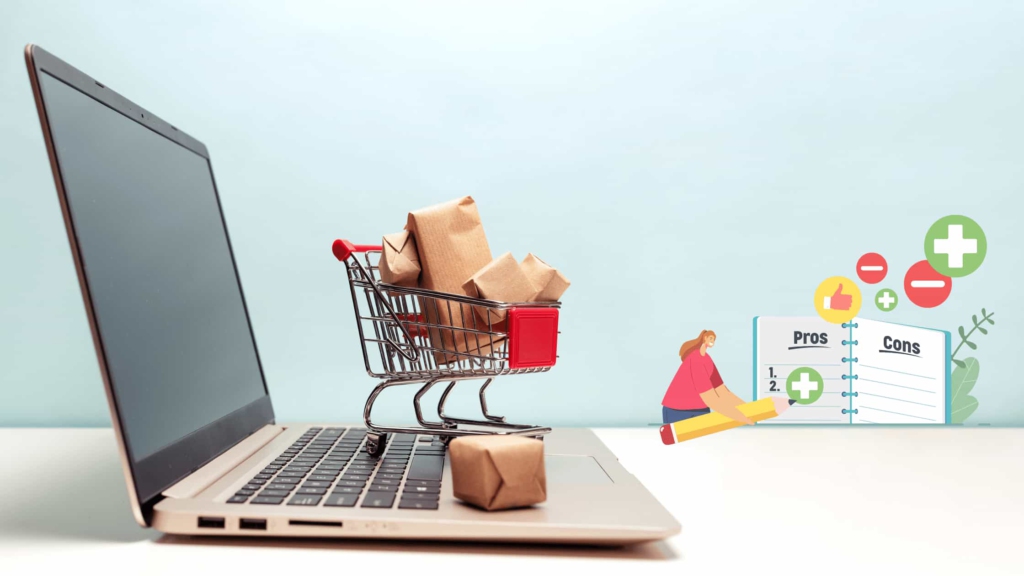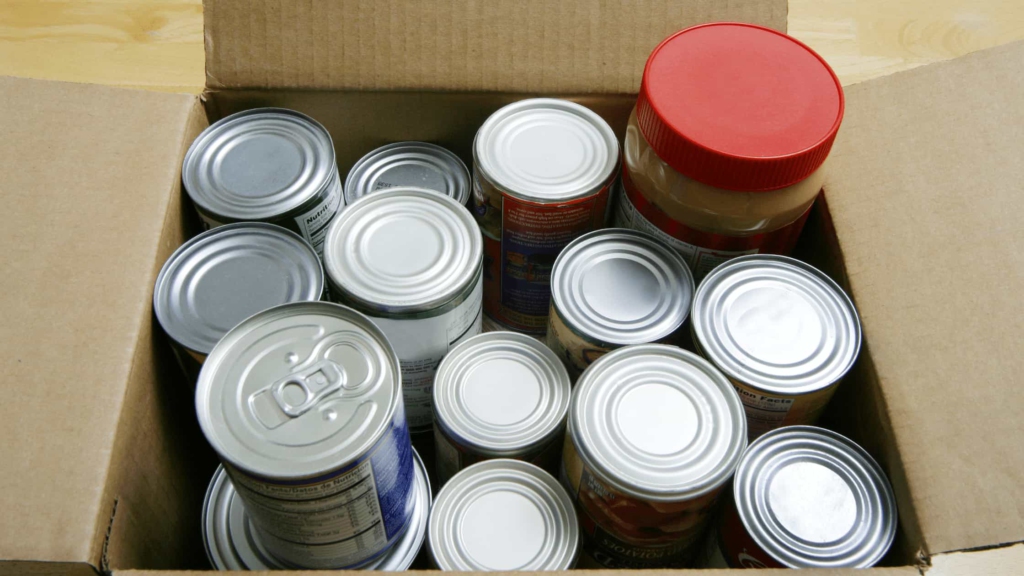If you’re wondering how to sell food on Amazon and turn your passion for cooking into profit, you’re in the right place. Amazon’s massive platform offers a huge audience of potential buyers for your tasty treats or healthy snacks.
But first, you need to navigate the approval process, which might seem tricky at first. Don’t worry, though—we’ve got you covered. In this guide, we’ll unravel the secrets to getting your food items approved by Amazon, step by step. From understanding Amazon’s requirements to packaging and labeling your products just right, we’ll show you how to clear those initial hurdles with ease.
Keep reading to discover how you can turn your kitchen into a successful storefront on one of the world’s largest online marketplaces.
Benefits of Selling Food Products on Amazon
Selling food products on Amazon offers several advantages for both new and experienced sellers. Here are some of the primary benefits:
Access to a Vast Customer Base
Amazon is one of the largest online marketplaces in the world, with millions of customers visiting the site every day. This means that you have access to a vast customer base that is actively looking for food products to purchase. By selling your food products on Amazon, you can tap into this broad customer base and increase your sales potential.
Convenience of Amazon’s Fulfillment Options
Another advantage of selling food products on Amazon is the convenience of Amazon’s fulfillment options. With Amazon’s Fulfillment by Amazon (FBA) program, you can ship your products to Amazon’s warehouses, and they will handle the rest. Amazon will store your products, pick, pack, and ship them to customers, handle customer service, and even process returns. This means that you can focus on creating high-quality food products while Amazon takes care of the rest.
Increased Exposure and Brand Awareness
Selling your food products on Amazon can also increase your exposure and brand awareness. Amazon’s search algorithm is designed to help customers find products that match their search queries. By optimizing your product listings and using relevant keywords, you can increase the visibility of your products and attract more customers.
Low Startup Costs
Starting a business can be expensive, but selling food products on Amazon can be an affordable way to get started. Amazon offers two different selling plans: Individual and Professional. The Individual plan has no monthly fee, but you will be charged a per-item fee for each product you sell. The Professional plan has a monthly fee, but it allows you to sell an unlimited number of products without paying a per-item fee. Additionally, Amazon does not require any minimum order quantities, so you can start small and grow your business over time.
Overall, selling food products on Amazon can be a profitable and convenient way to reach a vast customer base, increase your exposure and brand awareness, and start a business with low startup costs.
How to Sell Food on Amazon Regulations

Selling food on Amazon comes with specific policies, regulations, and requirements that you need to adhere to. These policies are in place to ensure that the food products being sold on Amazon are safe for consumption and comply with all the necessary regulations. Here are some of the Amazon food-selling regulations you need to be aware of:
Approval and Certification
Before you can start selling food on Amazon, you need to have the necessary approvals and certifications. For instance, if you are a US seller, you need to provide a Certificate of Registration with the US Food and Drug Administration (FDA) and your FDA New Dietary Ingredient Notification. As a UK seller, the Food Standards Agency (FSA) requires you to register your food business and comply with all the necessary regulations.
Product Requirements
Amazon has specific requirements for the food products that can be sold on its platform. For instance, the products need to be labeled correctly, and the labels should be in English. Additionally, the products should have a minimum shelf life of 90 days, and the packaging should be tamper-evident.
Quality Control
Amazon requires sellers to have a quality control system in place to ensure that the food products being sold are of high quality. This includes having a process for inspecting the products, ensuring that they are stored correctly, and maintaining a record of all the products sold.
Returns and Refunds
Amazon has a strict returns and refunds policy for food products. If a customer receives a product that is damaged or expired, they can return it for a full refund. As a seller, you need to have a process in place for handling returns and refunds, and you should be prepared to provide excellent customer service.
By following these regulations, you can ensure that your food products meet the necessary standards and are safe for consumption. Additionally, complying with these regulations can help you avoid any legal issues and build trust with your customers.
Pros And Cons Of Selling Food On Amazon

Selling food on Amazon can be a profitable venture, but it also has its drawbacks. Here’s a table that outlines the pros and cons of selling food on Amazon:
| Pros | Cons |
| Access to a large customer base | High competition |
| Minimal upfront investment | Strict regulations |
| Convenient fulfillment options | Risk of negative reviews |
| Opportunity for growth | Limited control over shipping and handling |
Pros
One of the biggest advantages of selling food on Amazon is the access to a large customer base. With millions of customers visiting Amazon every day, you have the potential to reach a wider audience than you would with a physical store or a smaller online marketplace. Additionally, the upfront investment required to sell food on Amazon is relatively low, making it an attractive option for new sellers.
Amazon also offers convenient fulfillment options, such as Fulfillment by Amazon (FBA), which allows you to store your products in Amazon’s warehouses and have them shipped directly to customers. This can save you time and money on storage and shipping costs.
Cons
However, there are also some drawbacks to selling food on Amazon. The competition can be high, with many other sellers offering similar products. Additionally, there are strict regulations in place to ensure the safety and quality of food sold on the platform, which can be time-consuming and costly to comply with.
Negative reviews can also be a risk when selling food on Amazon, as customers may be more critical of the quality and freshness of food products. Finally, sellers have limited control over shipping and handling, which can lead to issues with damaged or spoiled products.
Overall, selling food on Amazon can be a lucrative opportunity, but it’s important to weigh the pros and cons before diving in.
How to Get Amazon Approval to Sell Food

Selling food on Amazon can be a profitable business, but before you start, you need to get approval from Amazon. Here are some guides to get Amazon approval to sell food:
- Register for a Professional Selling Plan: To sell food on Amazon, you need to have a Professional Selling Plan. This plan costs $39.99 per month, but it allows you to sell an unlimited number of products in all categories, including food.
- Provide the necessary documentation: As a food seller, you need to provide Amazon with some documents before you can start selling. The required documents may vary depending on your location, but they usually include a Certificate of Registration with the U.S. Food and Drug Administration (FDA) and your FDA New Dietary Ingredient Notification.
- Ensure your products meet Amazon’s guidelines: Amazon has strict guidelines for the products it allows to be sold on its platform. Make sure your products meet these guidelines before you apply for approval. For example, food items must have a minimum shelf life of 90 days from the date of delivery, and they must be shipped in new condition.
- Apply for approval: Once you have all the necessary documents and your products meet Amazon’s guidelines, you can apply for approval to sell food on Amazon. To do this, go to your Seller Central account, navigate to the “Add a Product” section, locate the option to “Apply to Sell,” and click on it. Click on “Request Approval” to proceed with your application.
- Wait for approval: Amazon may auto-approve you, or you may need to wait for a few days for your application to be reviewed. If your application is rejected, Amazon will provide you with a reason for the rejection, and you can take steps to address the issue and reapply.
In summary, getting Amazon approval to sell food requires registering for a Professional Selling Plan, providing the necessary documentation, ensuring your products meet Amazon’s guidelines, applying for approval, and waiting for approval. With these steps, you can start selling food on Amazon and grow your business.
Listing Your Food Products on Amazon

When it comes to selling food products on Amazon, creating high-quality product listings is crucial for attracting customers and driving sales. Follow these tips to create compelling and compliant listings that meet Amazon’s product requirements and stand out from the competition.
Creating High-Quality Product Listings
To create a high-quality product listing on Amazon, start by writing a clear and concise product title that includes important keywords and accurately describes your product. Next, write a detailed product description that highlights the unique features and benefits of your product, including any certifications or special ingredients.
In addition to well-written copy, high-quality product photography is essential for showcasing your food products on Amazon. Make sure to photograph your products from multiple angles and in good lighting, and include images of the product packaging and any relevant nutrition or ingredient labels.
Using Effective Keywords and Images
Using the right keywords and images is key to making your food products visible to potential customers on Amazon. Use Amazon’s search bar to research relevant keywords and include them in your product title, description, and backend search terms.
In addition to keywords, including high-quality images in your product listing can help attract customers and increase sales. Make sure your images are clear, well-lit, and accurately depict your product.
Setting Competitive Prices
Setting competitive prices is important for driving sales and staying competitive in the grocery category on Amazon. Research your competitors’ prices and set your prices accordingly, taking into account any additional costs such as shipping or packaging.
In addition to competitive pricing, offering promotions and discounts can help attract customers and drive sales on Amazon. Consider offering free shipping or discounts for bulk purchases to incentivize customers to buy your food products.
Overall, creating compelling and compliant product listings is key to selling food products on Amazon. By following these tips and best practices, you can create product listings that stand out from the competition and drive sales for your business.
How to Boost Sales of Food Items on Amazon

Selling food items on Amazon can be a lucrative business, but it can also be competitive. To stand out and boost your sales, you need to implement effective marketing strategies.
Utilize Amazon Sponsored Products
One effective way to increase the visibility of your food items on Amazon is by utilizing Amazon Sponsored Products. This advertising program allows you to promote your products on Amazon’s search results pages and product detail pages. You only pay when someone clicks on your ad, which can help to keep your advertising costs low.
To get started with Amazon Sponsored Products, you need to create an advertising campaign and select the products you want to promote. You can then set your budget and bid on keywords that are relevant to your products. Amazon will then display your ads to customers who are searching for those keywords.
Optimize for Amazon SEO
Another way to boost your sales on Amazon is by optimizing your product listings for Amazon SEO. This involves using relevant keywords in your product titles, descriptions, and bullet points to help your products appear higher in Amazon’s search results.
To optimize your product listings for Amazon SEO, you should conduct keyword research to find the most relevant keywords for your products. You should then incorporate these keywords into your product listings in a natural and informative way.
Engage with Customer Reviews
Engaging with customer reviews can also help to boost your sales on Amazon. When customers leave reviews on your product listings, you should respond to them in a timely and professional manner. This shows that you value your customers and are committed to providing excellent customer service.
You can also use customer reviews to improve your products. If you notice a common complaint in customer reviews, you should address it and make changes to your products if necessary.
By utilizing Amazon Sponsored Products, optimizing for Amazon SEO, and engaging with customer reviews, you can boost your sales of food items on Amazon and grow your business.
Choosing the Right Fulfillment Option for Your Food Products

When selling food on Amazon, one of the most important decisions you’ll make is choosing the right fulfillment option. Your choice will have a significant impact on your business’s success. Here are some things to consider when deciding between Fulfillment by Amazon (FBA) and Fulfillment by Merchant (FBM).
Fulfillment by Amazon (FBA)
FBA is a popular choice for many Amazon sellers, including those who sell food products. With FBA, Amazon stores your products in their warehouses, handles the shipping and handling, and provides customer service. This can save you time and energy, and allow you to focus on other aspects of your business.
Pros of FBA for Food Products
- Amazon’s warehouses are climate-controlled, which is important for perishable items.
- Amazon has strict quality control measures in place, which can help ensure that your food products are stored and shipped properly.
- FBA can help increase your visibility on Amazon, as products that are fulfilled by Amazon are often given priority in search results.
Cons of FBA for Food Products
- FBA fees can be higher than FBM fees, which can eat into your profits.
- You may have less control over the shipping process, which can be a concern for perishable items.
- If Amazon loses or damages your products, it can be difficult to get reimbursed.
Fulfillment by Merchant (FBM)
FBM is another option for selling food products on Amazon. With FBM, you store your products yourself and handle the shipping and handling. This can give you more control over the process, but it also means that you’ll need to invest more time and energy into your business.
Pros of FBM for Food Products
- You have more control over the shipping process, which can be important for perishable items.
- FBM fees are generally lower than FBA fees, which can increase your profits.
- You can customize your packaging and branding, which can help set your products apart from competitors.
Cons of FBM for Food Products
- You’ll need to handle all aspects of the shipping and handling process, which can be time-consuming and require additional resources.
- You may not have access to Amazon’s customer service, which can impact your reputation and sales.
- Shipping times may be longer than with FBA, which can impact customer satisfaction.
When choosing between FBA and FBM, it’s important to consider the specific needs of your business and your food products. Keep in mind the pros and cons of each option, and choose the one that best fits your needs.
Conclusion
In conclusion, learning how to sell food on Amazon opens up a world of opportunity for culinary entrepreneurs. By navigating the approval process, understanding Amazon’s specific requirements, and leveraging effective marketing strategies, you can reach a vast audience eager for your unique food offerings.
It’s about more than just listing your products; it’s about creating a brand that resonates with consumers and stands out in a competitive marketplace. Embrace the journey, continuously optimize your listings based on customer feedback, and stay informed on industry trends.
With dedication and the right approach, selling food on Amazon can be a rewarding and profitable venture. So why wait? Take the first step towards selling food on Amazon today!
Read more about Amazon approval article: What Can I Sell on Amazon Without Approval
Frequently Asked Questions
Can food items be sold on Amazon?
Yes, you can sell food items on Amazon. Amazon allows sellers to list and sell food products, including grocery and gourmet foods, snacks, beverages, and more. However, there are certain requirements that sellers must meet to sell food on Amazon, including obtaining necessary certifications and complying with food safety regulations.
How much does Amazon charge to sell food?
Amazon charges a referral fee for each item that is sold on its platform. The referral fee varies depending on the category of the product. For grocery and gourmet food items, the referral fee ranges from 6% to 45% of the item price, depending on the selling price. Additionally, sellers may also be charged a monthly subscription fee for a professional selling account.
Does Amazon ship food for free?
Amazon offers free shipping on eligible orders over $25 for Prime members. However, not all food items are eligible for free shipping, and some may require additional fees for expedited shipping or delivery to certain locations. It’s important to check the shipping options and fees before listing your food items on Amazon.
Can you sell perishable goods on Amazon?
Yes, you can sell perishable goods on Amazon, but there are certain restrictions and requirements that must be met. Perishable food items must be properly packaged and labeled to ensure food safety during shipping and handling. Additionally, sellers must comply with federal and state regulations for food safety and labeling.
What food store does Amazon own?
Amazon owns Whole Foods Market, a chain of natural and organic grocery stores. Whole Foods Market offers a wide selection of products, including fresh produce, meat, seafood, bakery items, and prepared foods. Whole Foods Market also offers online ordering and delivery through Amazon Prime Now in select cities.
